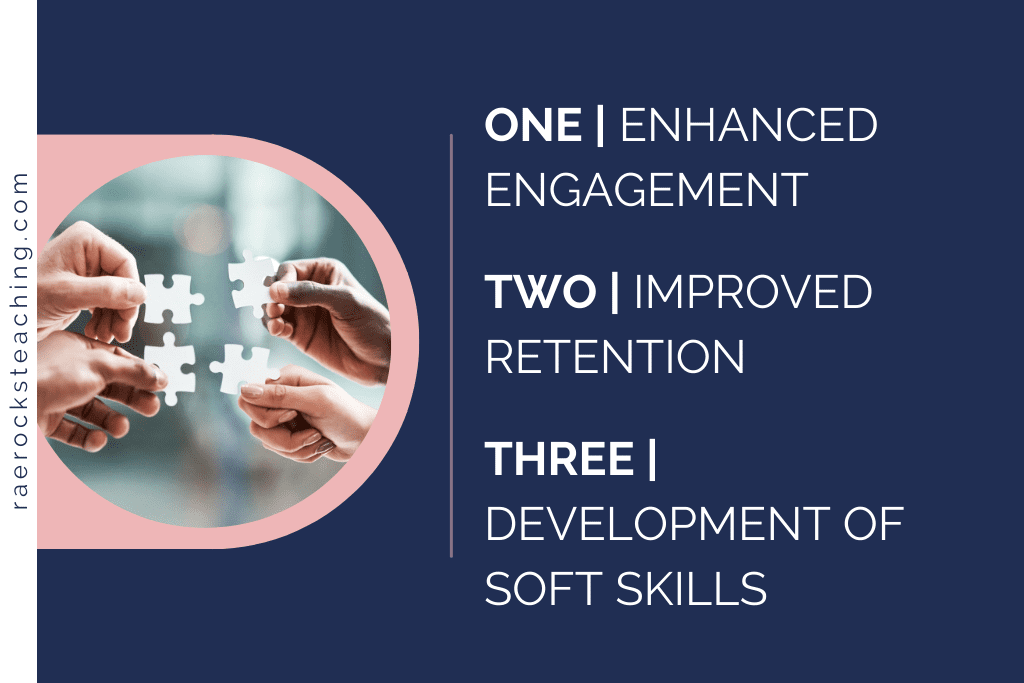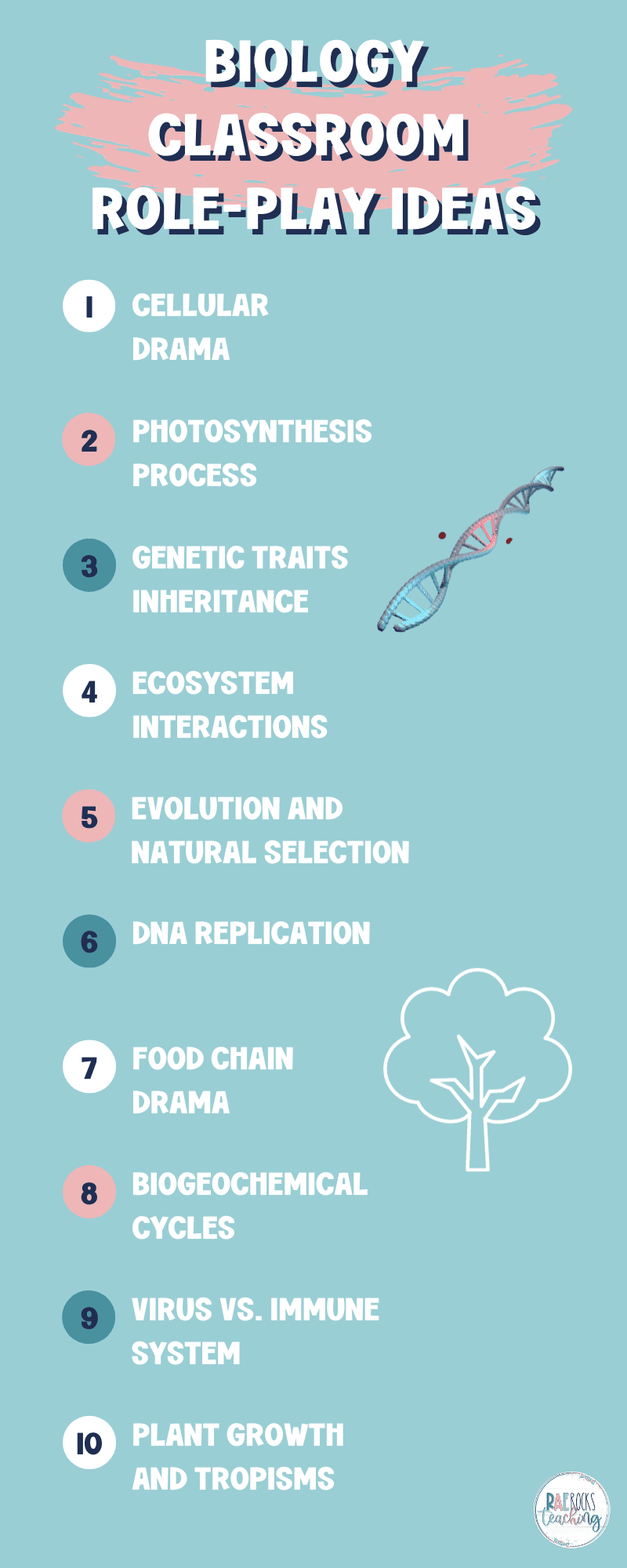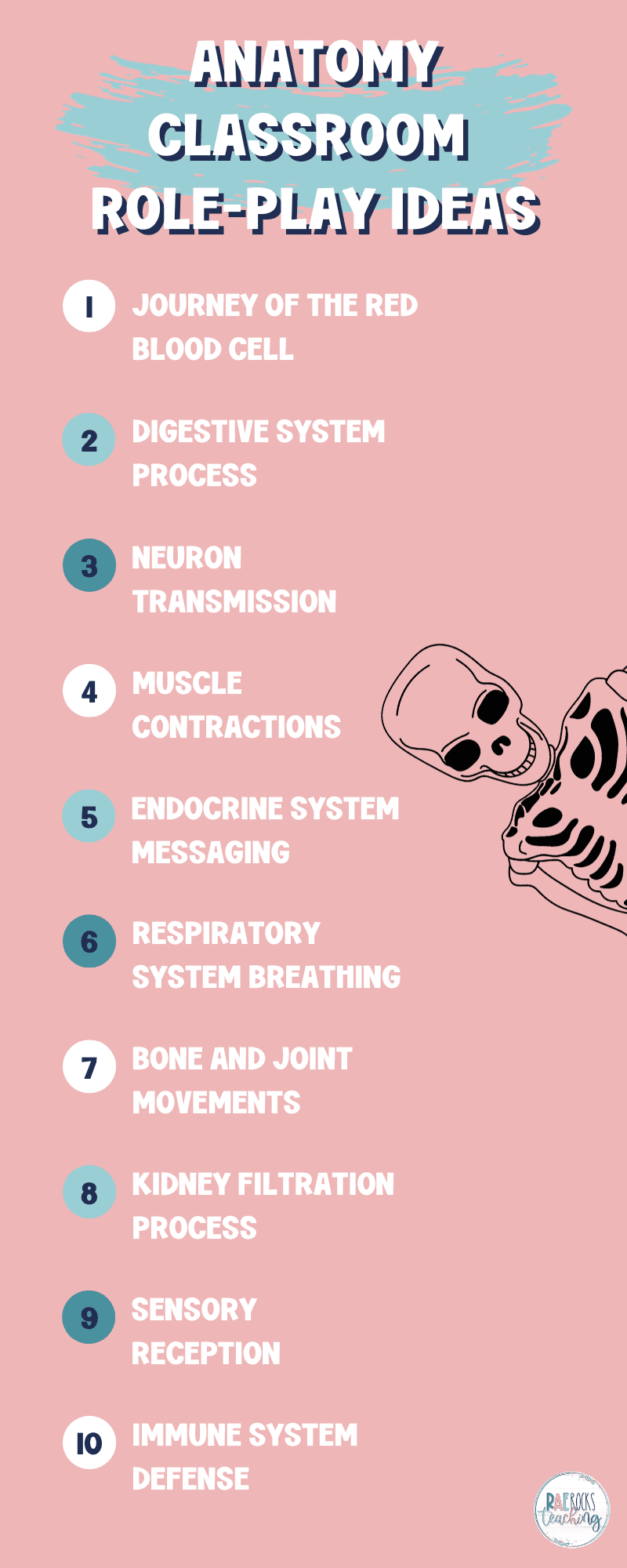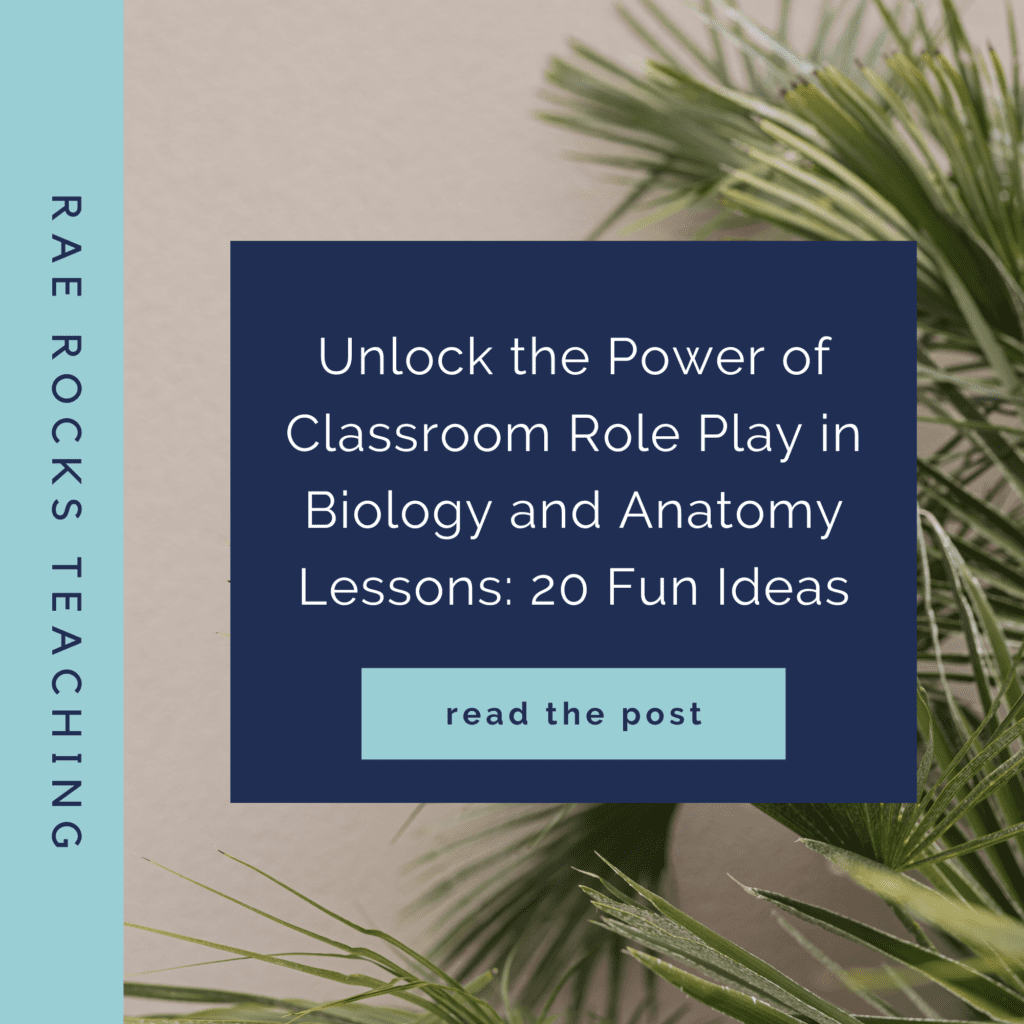Have you ever thought about incorporating classroom role play into your biology or anatomy classes? The classroom is a stage, and every student has the potential to be a star performer. As educators, we’re always seeking innovative methods to make complex concepts come alive. One such method that’s gaining traction, especially in the realms of biology and anatomy, is classroom role play.
Looking for different ways to engage your Biology students? Then grab your FREE COPY of the ULTIMATE ENGAGEMENT GUIDE!
Why Classroom Role Play?
Classroom role play isn’t just about donning costumes or putting on a show. It’s an immersive learning experience that allows students to embody concepts, making abstract ideas tangible. By stepping into the shoes of a red blood cell or acting out the process of photosynthesis, students not only understand the topic but also retain the information longer.
Benefits of Classroom Role Play Scenarios
ONE | Enhanced Engagement: Role play has been shown to increase student participation and attentiveness, as they’re actively involved in the learning process.
TWO | Improved Retention: When students act out concepts, they’re more likely to remember them long-term.
THREE | Development of Soft Skills: Role play fosters skills like teamwork, communication, and problem-solving.

-
Save
Potential Challenges and Solutions of Classroom Role Play Scenarios
ONE | Shyness or Reluctance: Some students might be hesitant to participate. Solution: Offer them supporting roles or pair them with more confident peers.
TWO | Complexity of Topics: Some subjects might be challenging to act out. Solution: Use props, drawings, or multimedia to aid in visualization.
Biology Classroom Role-Play Ideas
- Cellular Drama
Have students take on roles as different cell organelles. This helps them understand the functions and interactions of organelles within a cell.
- Photosynthesis Process
Students can act out the steps of photosynthesis, bringing this abstract concept to life.
- Genetic Traits Inheritance
Using Punnett squares, students can role-play as dominant and recessive genes, making understanding genetic inheritance more tangible.
- Ecosystem Interactions
Students can represent different species in an ecosystem, helping them grasp ecological relationships and balances.
- Evolution and Natural Selection
Students can act as different species undergoing changes over time, demonstrating the principles of survival of the fittest.
- DNA Replication
Students can represent the double helix, nucleotides, and enzymes, providing a visual understanding of a complex molecular process.
- Food Chain Drama
Students can represent various organisms in a food chain, helping them understand energy transfer in ecosystems.
- Biogeochemical Cycles
Students can act out the water, carbon, and nitrogen cycles, offering a dynamic understanding of essential ecological cycles.
- Virus vs. Immune System
Some students can play viruses while others represent different components of the immune system, helping them grasp the complexities of the immune response.
- Plant Growth and Tropisms
Students can act as plants responding to external stimuli, showcasing how plants adapt and respond to their environment.

-
Save
Human Anatomy Scenarios
- Journey of the Red Blood Cell
Students can follow the path of a red blood cell through the heart, lungs, and body, offering a comprehensive understanding of the circulatory system.
- Digestive System Process
Students can act out the journey of food from ingestion to excretion, providing a step-by-step understanding of digestion.
- Neuron Transmission
Students can represent neurons, visualizing the complex process of neural communication.
- Muscle Contractions
Students can act as muscle fibers, helping them grasp the biomechanics of movement.
- Endocrine System Messaging
Students can play the roles of glands and target organs, demonstrating the body’s chemical communication system.
- Respiratory System Breathing
Students can act out the process of inhalation and exhalation, providing a clear understanding of breathing mechanics.
- Bone and Joint Movements
Students can represent bones and joints, showcasing the skeletal system’s role in mobility.
- Kidney Filtration Process
Students can act out the process of blood filtration in the kidneys, offering insight into the body’s waste management system.
- Sensory Reception
Students can play the roles of sensory organs, helping them understand how we perceive our environment.
- Immune System Defense
Students can represent white blood cells, antibodies, and pathogens, providing a dynamic view of the body’s defense mechanisms.

-
Save
Classroom role play is more than just a teaching tool; it’s a transformative experience. By allowing students to step into roles, we’re not just teaching them about biology or anatomy; we’re letting them live it. As educators, our goal is to make learning memorable, and with classroom role play, we’re doing just that. So, the next time you’re planning a lesson, consider how role play can elevate the learning experience. Your students will not only thank you, but they’ll also remember the lesson for years to come.
I love sharing with y’all and would love to connect on IG or Facebook. Don’t forget to snag the 15 Activities for Biology to Increase Engagement FREEBIE!

-
Save
I love sharing helpful content with y’all and would love to connect on IG or Facebook. I’m on TikTok too! Follow me and send me a DM with what you need more of because I’m here to help! If you are looking for even more inspiration, find me on Pinterest!
Wanna read more?
A Hands-on Approach to Learning in Anatomy: A High School Adventure
3 Reasons You Should Use Interactive Stations To Teach Human Anatomy Positions
3 Awesome Teaching Tools that Use AI Lesson Plans to Save Time
Share via:








